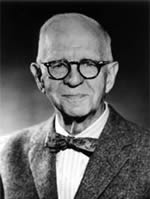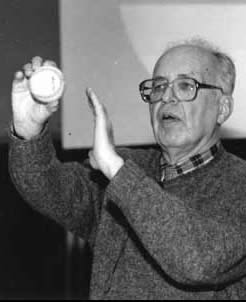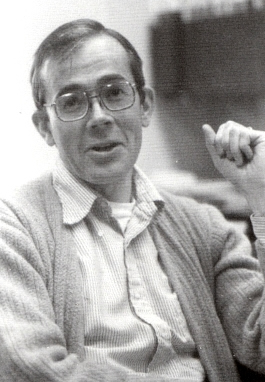Physics of Baseball Pioneers
Lyman Briggs:

From Lyman Briggs College
Briggs was an outfielder on the Michigan State College baseball team during the 1890s and graduated second in his class at the age of 19. He became the third director (from 1933 to 1945) of the National Bureau of Standards (now named the NIST). He wrote two important early papers:
- Method for the Measurement of the Coefficient of Restitution and the Spin of a Ball [written in 1945]
- Effect of Spin and Speed on the Lateral Deflection (curve) of a Baseball; and the Magnus Effect for Smooth Spheres [written in 1959]
A popular account of both Brigg's papers can be found at the website for National Institute of Standards and Technology (NIST).
Paul Kirkpatrick:

Stanford physics professor, well known for his pioneering research in the use of x-rays for scientific purposes. He also had a great interest in the physics of baseball and after retiring from the university, he wrote a seminal American Journal of Physics article in 1963 entitled Batting the Ball.
He was also the subject of a New York Times Opening Day 1982 article entitled Season Opens for Fans of Ballistic Physics. His quote about the dramatic end of the 1962 World Series game between the New York Yankees and the San Francisco Giants has become famous when describing what happened to end the game, from a physics point of view, when he said:
''In baseball, the vertical coordinate of the bat at contact is both important and hard to control. Most strike-outs result from its mismanagement, and the 1962 world championship was finally determined by an otherwise perfect swing of a bat which came to the collision one millimeter too high to effect the transfer of title.''
Robert Adair:

Sterling Professor Emeritus of Physics at Yale University and former Physicist to the National League. He is the first to do a comprehensive study of the subject, resulting in a popular book appropriately entitled The Physics of Baseball, originally published in 1990 and currently in its 3rd edition (2002).
Reviews of the book report that it blends scientific fact and baseball trivia nicely. Barnes and Noble booksellers write that the book is full of anecdotes about famous players and incidents that provide fans with fascinating insights into how physics relates to baseball. He wrote a shortened version of the book in a Physics Today article (May 1995) with the same title. Prof. Adair's book has been a continuing source of inspiration for my own work in the field.
Robert Watts:

Tulane University mechanical engineering professor who wrote two important American Journal of Physics articles based on wind tunnel experiments on a baseball: Aerodynamics of a knuckleball and The lateral force on a spinning sphere: Aerodynamics of a curveball. Watts is also co-author with Terry Bahill of the book Keep Your Eye on the Ball: Curve Balls, Knuckleballs, and Fallacies of Baseball, an excellent book addressing many issues on the science of the game.
Lonnie Van Zandt:

Purdue University physics professor who wrote an important American Journal of Physics article in 1991 entitled The Dynamical Theory of the Baseball Bat.
In his Physics Today article, Adair calls this work "one of the most elegant calculations in sports physics." I agree. In fact, this article provided the primary motivation for my very first foray into the field.
Rod Cross:

University of Sydney physics professor whose first baseball paper, The Sweet Spot of a Baseball Bat, appeared in the September 1998 issue of American Journal of Physics, just as I was starting my own bat calculations. Thus began our professional relationship and frequent collaborations that continue to this day. Rod has written a book, Physics of Baseball and Softball which is the definitive treatise on the subject. It was published in 2011 and is your one-stop shopping for the results of the latest research.

